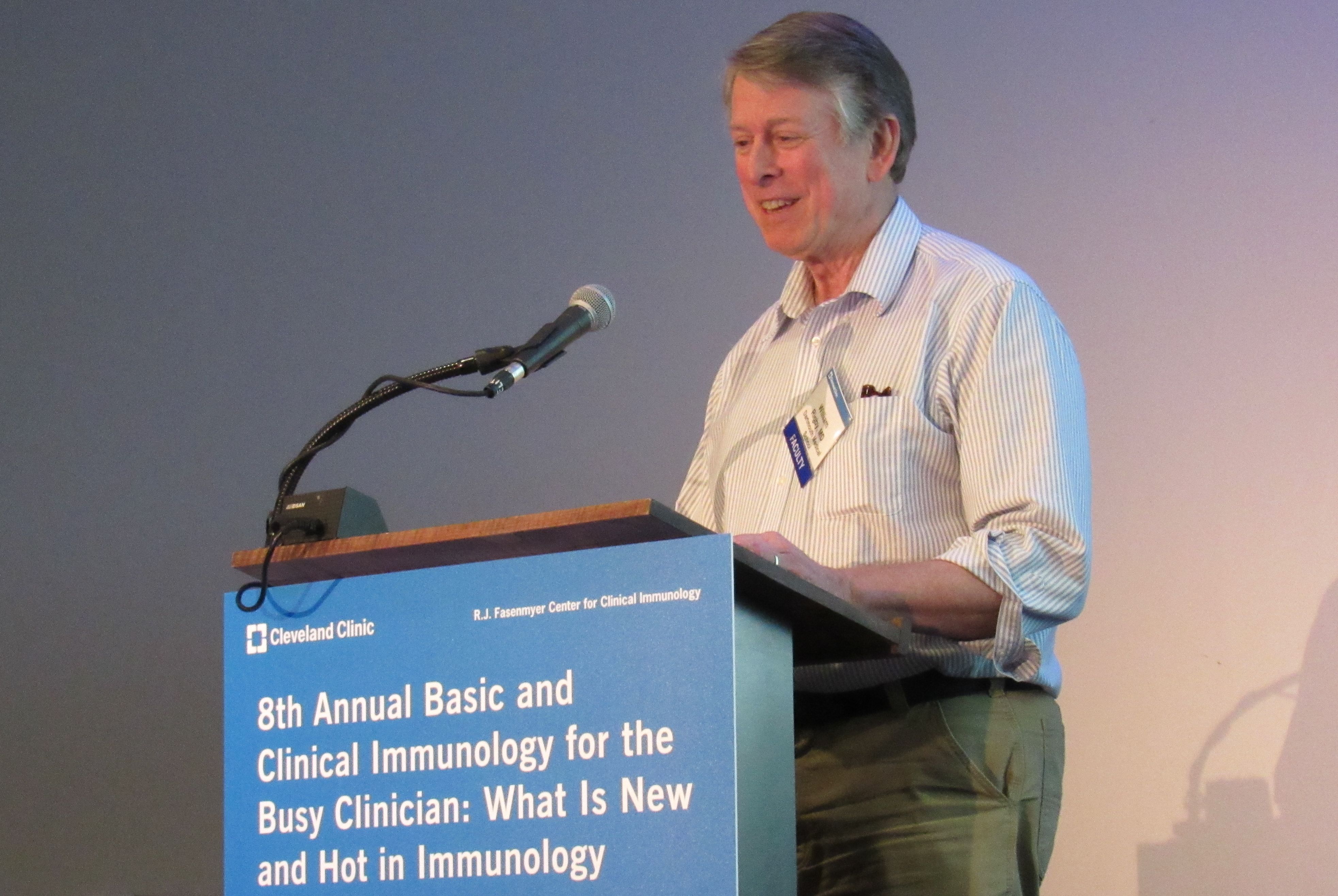Speaker urges 'humility' regarding IL-17, IL-12/23 treatments

SCOTTSDALE, Ariz. — IL-23 drives IL-17 production. IL-17 inhibition is effective in ankylosing spondylitis. However, evidence has shown that IL-23 or IL-12/23 inhibition is not necessarily effective in AS.
According to William Rigby, MD, of the Dartmouth-Hitchcock Medical Center, in Lebanon, New Hampshire, logical inconsistencies like this call for a healthy dose of humility among researchers and physicians when it comes to biologic and pathophysiologic complexity.
“This talk is all about humility,” Rigby told attendees at the Basic and Clinical Immunology for the Busy Clinician annual symposium. “I think we should all be humble — it’s harder for some of us than others. These compelling basic and translational data cannot predict efficacy and safety. The role of the clinical trial is pre-eminent. You’ve heard me say that once, and I’m saying it again.”
To account for the aforementioned inconsistency, Rigby said one potential model states that the IL-17 production that occurs in the spine in AS is not IL-23 dependent. In this hypothesis, IL-23 inhibition with anti-P19 antibodies, or blocking IL-12/23, has no effect on IL-17 production.

Another “logical inconsistency,” according to Rigby, is that IL-17 inhibition is ineffective in Crohn’s disease, despite IL-23 being a key driver of IL-17 production and that IL-12/-23 inhibitors have been effective in Crohn’s. Model concepts to help explain this include that IL-23 stimulated IL-17 important in Crohn’s, and that the IL-17 inhibition effect in Crohn’s is trumped by the loss of barrier function by IL-17 that is IL-23 independent.
“What I don’t understand is, with all the ixekizumab I have used in AS patients, and all the secukinumab I have used in AS patients, I have never seen a flare of Crohn’s disease,” Rigby said. “And yet, I told you that AS patients in studies 30 years ago showed that there is sub-clinical Crohn’s disease in 30% to 40% of patients with ankylosing spondylitis. However, I’ve never seen a flare of this.”
Rigby also pointed to the EXXELERATE trial that demonstrated certolizumab pegol (Cimzia, UCB) plus methotrexate is not superior to adalimumab (Humira, AbbVie) plus methotrexate in patients with rheumatoid arthritis.
In that study, investigators randomly assigned participants to one of two TNF inhibitors —certolizumab pegol or adalimumab — plus methotrexate. At week 12, researchers classified patients as either responders or non-responders, with the latter group switched to the other TNF inhibitor with no washout period.
“In fact, you would expect no one to respond, because they already had 12 weeks of a TNF-antagonist, so in the second 12 weeks they should not respond,” Rigby said. “But, as you know, the response rates were no different between the two groups, and there were significant numbers of patients who were captured by another 12 weeks on a different TNF-antagonist.”
“So, when we think about these drugs as being equivalent and identical, I think we have to remember not only are the pathways more complicated, but antagonizing those pathways is also more complicated,” he added. “Even direct targeting of a single ligand — TNF — reveals unexpected complexity, as we saw in the EXXELERATE trial.” – by Jason Laday
Reference:
Rigby W. IL-17 and IL-12/IL-23 — in health and disease. Presented at: Basic and Clinical Immunology for the Busy Clinician; Feb. 28-29, 2020; Scottsdale, Arizona.
Disclosures: Rigby reports consulting fees from AbbVie, Bristol-Myers Squibb, Gilead and Genentech/Roche; research/independent contractor funds, as well as teaching and speaking fees from Genentech/Roche; and advisory board or review panel membership with AbbVie, Gilead, Genentech/Roche and Pfizer.

